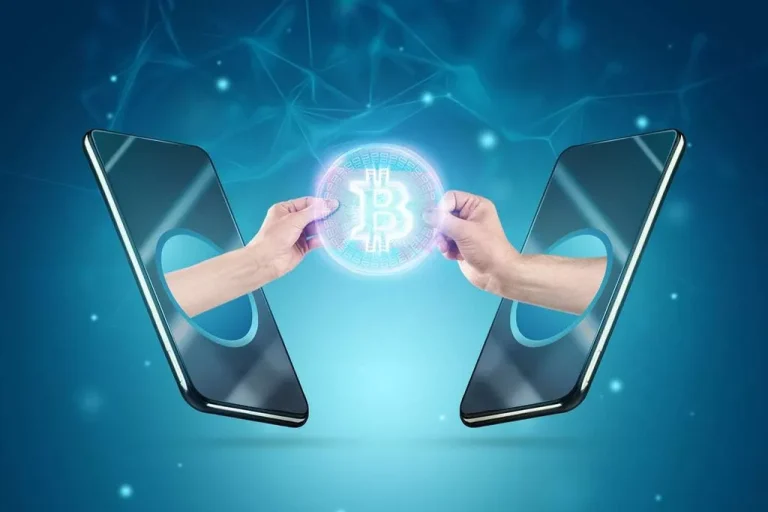The Final Word Ethereum Dapp Tutorial The Way To Construct A Full Stack Decentralized Application Step-by-step
Next, we call the “contract” function, and write all our exams within the callback perform. This callback perform provides an “accounts” variable that represents all the accounts on our blockchain, provided by Ganache. Then, we create a constructor function that may get called each time we deploy the good contract to the blockchain. This is the place we’ll set the worth of the candidate state variable that will get stored to the blockchain upon migration.
They are additionally unable to promote users’ data to other entities as a end result of dapps run autonomously as soon as they’re launched. To introduce dapps, we want to introduce good contracts – a dapp’s backend for lack of a better term. For an in depth overview, head to our section on smart contracts. A decentralized app or dApp provides the benefits of centralized cloud-based apps like Google Docs, but with out the need for cloud datacenters. Using the identical blockchain know-how like cryptocurrencies, ICOs, and NFTs, dApps offer distinctive security and privacy advantages. These are purposes that target building out monetary companies using cryptocurrencies.

Notice that the constructor perform has the identical name as the good contract. Also, they’re referred to as sensible contracts as a outcome of they symbolize a covenant or settlement. In the case of our voting dApp, it’s an settlement that my vote will depend, that different votes are solely counted as quickly as, and that the candidate with essentially the most votes will truly win the election. The function of good contracts on the blockchain is very comparable to a microservice on the internet.
Instead of speaking to a back-end server, this client will hook up with a local Ethereum blockchain that we’ll install. We’ll code all of the business logic about our dApp in an Election sensible https://www.xcritical.com/ contract with the Solidity programming language. We’ll deploy this good contract to our native Etherum blockchain, and allow accounts to start voting.
What’s The Hottest Decentralized Application?
We wish to make positive that their votes are counted, and that they are only counted once. Web 3.0 is a lot of things, but at its core is a know-how based mostly on decentralization. By decentralizing information and services, large firms and governments will not be capable of control users of the Internet via monopolistic, authoritarian ways. Now that we have a good idea of what Ethereum and good contracts are, we are in a position to start diving into the main points of what a Dapp is.
Let’s use an analogy to understand what a blockchain is and how it works. You can also obtain all the video content to the complete 2-hour video tutorial right here free of charge 🎉. Donations to freeCodeCamp go towards our schooling initiatives, and assist pay for servers, providers, and staff. The improvement of Dapps is another step towards a way ahead for the Internet that is generally known as Web three.zero. Take a have a look at technologies like Swarm and IPFS to study extra about decentralized storage. To understand what a Dapp is, you first want to know what Ethereum is.
How Do Developers Create Decentralized Apps?
They are free from control and interference by any single authority. For example, a developer can create an X-like dApp and put it on a blockchain where any consumer can publish messages. Once posted, no one except the message originator can delete the messages. Dapp customers may feel more secure in the data that the creators of the applying can’t control how it’s used – a minimum of, not in the standard way. For instance, the creators of a social community dapp are powerless to remove a submit or exclude a user.

Now, there are different protocols which would possibly be used to build Dapps, like EOS, NEO, Stellar, Tron, and Cardano, however the huge canine is Ethereum. Alright, that’s the short version, but there’s much more to unpack. Let’s dive into the world of Dapps, extra specifically those constructed on the Ethereum protocol.
A sensible contract is code that lives on the Ethereum blockchain and runs exactly as programmed. Once sensible contracts are deployed on the network you can’t change them. Dapps may be decentralized as a result of they’re controlled by the logic written into the contract, not a person or firm. This additionally means you should design your contracts very fastidiously and check them completely.
Record Candidates – Step 2
However, some consultants are skeptical this can work in practice. We’ll build a client-side software that can talk to our good contract on the blockchain. This client-side application will have a desk of candidates that lists every candidate’s id, name, and vote count.
It additionally enables us to test our sensible contracts and deploy them to the blockchain. It additionally provides us a place to develop our client-side utility. Decentralized applications, or dApps, are software packages that run on a blockchain or peer-to-peer (P2P) network of computers instead of on a single computer. Rather than working beneath the management of a single authority, dApps are spread throughout the network to be collectively controlled by its users. They are often built on the Ethereum platform and have been developed for numerous functions, together with wallets, exchanges, gaming, private finance, and social media.
On Smart Contracts
This check inspects the transaction receipt returned by the “vote” function to ensure that it has logs. We examine that the occasion is the right kind, and that it has the proper candidate id. The next check inspects the values of each decentralized applications (dapps) candidate within the election, ensuring that each candidate has the correct id, name, and vote depend. You can set up Ganache by downloading it from the Truffle Framework website. It will give us 10 external accounts with addresses on our native Ethereum blockchain.

Once they connect to the network, they forged their vote and pay a small transaction charge to write down this transaction to the blockchain. Whenever the vote is forged, a few of the nodes on the community, called miners, compete to complete this transaction. The miner who completes this transaction is awarded the Ether that we paid to vote.
I’m utilizing Sublime Text, and I’ve downloaded the “Ethereum” bundle that provides nice syntax highlighting for Solidity. As a recap, once I vote, I pay a gasoline value to vote, and when my vote gets recorded, one of the computer systems on the network gets paid the my Ether payment. I in turn am confident my vote was recorded accurately eternally.
Key Takeaways
Although decentralized functions are sometimes thought-about one of many holy grail of blockchain technology, they’re still largely experimental. Currently, dApps nonetheless have some growing pains to take care of earlier than they’ll compete with their web2 counterparts. By their nature, centralized entities have power of the info that flows into and out of their networks. For instance, financial entities can stop transactions from being despatched, and Twitter can delete tweets from its platform. Dapps put users back in control, making these sorts of actions troublesome if not impossibile. Ethereum is a versatile platform for creating new dApps, providing the infrastructure wanted for builders to focus their efforts on finding progressive uses for digital applications.
No longer will there be a central level of management as a end result of there will not be middle men to facilitate the move of information and companies. And at the push of a button, they can completely take away you from accessing this (your?) info and all associated companies. But it is possible to host your frontend code on decentralized storage nodes to make each your frontend and backend decentralized. This backend code is written in an Ethereum-specific language, including Solidity (the most popular), Serpent, and Vyper.
This means you anyone can use a dApp without needing a middleman. Decentralized purposes (dApps) are digital applications or programs that run on a decentralized network quite than a single computer or server. They are built on blockchain technology and use cryptocurrency as a way of exchange.
Leave a Reply